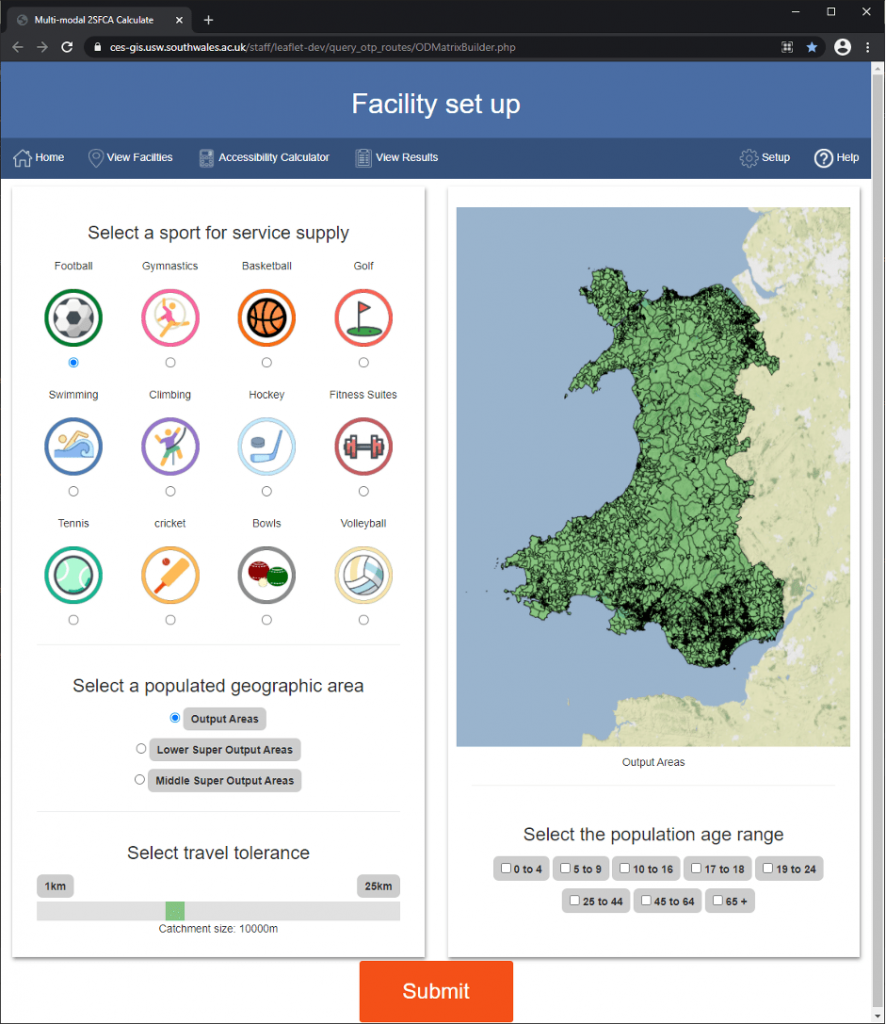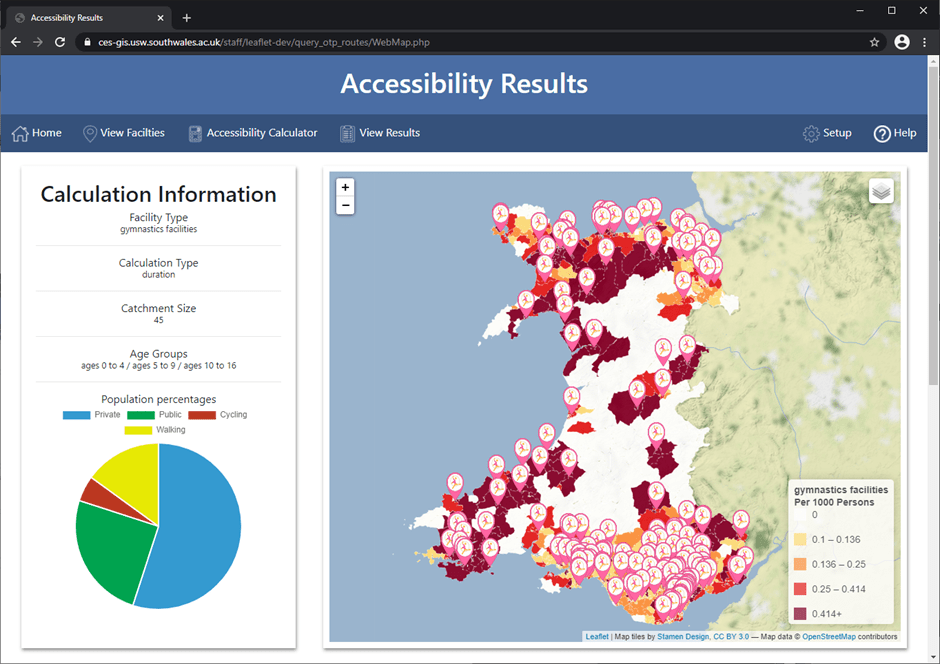Local authorities in Wales have had to make difficult decisions to close or rationalise a wide range of services in response to changes in the incidence of COVID-19. This has had major impacts for those sectors of the community most dependent on various forms of service provision. Where there have been partial closures involving changes in opening times, or where key decisions have been made to retain provision in some localities, this is likely to have important implications for geographical patterns of accessibility to key services.
In a recently published paper, we have attempted to incorporate such factors into a system that enables geographical inequalities in access to services to be investigated. Developed in the context of access to sports facilities such as gymnastics centres, the proposed solution demonstrates how open-source web-based GIS software, integrated with user friendly interfaces, can be used to examine the impact of policies that involve partially restricting or fully closing facilities, or modelling the impacts of new proposals regarding service provision.

Figure 1: Example of the user-interface of the proposed solution
The Culture, Welsh Language, and Communications committee of the Welsh Parliament (2020) is examining the impact of the pandemic on sport at grassroots and elite levels. The types of solutions developed in the paper can be used to analyse policy impacts on spatial patterns of accessibility across the age groups and communities of Wales. This will allow us to monitor post-pandemic responses which aim to increase sports participation particularly amongst females, ethnic minorities and those living in deprived communities.
This software can also be used to monitor access to other types of formal or informal opportunities for exercise or to examine potential inequalities in access to green spaces. This is timely as it would respond to recent calls to create neighbourhoods where facilities and services are within a short walking or cycling distance from people’s homes.
Sport Wales is active in promoting the role of sport in helping communities recover from the impacts of the pandemic in Wales. This has involved developing funding schemes aimed at helping those clubs and organisations most severely impacted by COVID-19, enhancing facilities available to existing participants as well as helping to attract new audiences to a wide range of physical activity opportunities.
Inequalities in physical activity patterns were shown to have widened during lockdown and this is even more pronounced for children living in deprived areas. Responding to these survey findings the interim Chief Executive of Sport Wales Brian Davies drew attention to the need “to make sport and physical activity as accessible as possible and target our resources to reach those communities and groups who are statistically less active.”
At the same time, the importance of access to indoor and outdoor activity opportunities on aspects of mental and physical health have been to the fore in discussions regarding the impact of COVID-19 on social groups.
A recent study in the United States, for example, has highlighted how spending time in activity spaces with access to indoor fitness centres, interacts with the types of advantages of living in more socioeconomically advantaged neighbourhoods, to reduce the risk of diabetes. The need for improvements in access to exercise opportunities has been echoed by the Future Generations Commissioner, Sophie Howe, who has reiterated the need for public green spaces to promote physical and mental health by calling for such opportunities to be made available within four minutes’ walk (about 330yds or 300m) of homes in towns, cities and villages throughout Wales.
Following on from a decade of austerity, we may anticipate further financial pressures on services, including some recreational facilities, which combined with potential withdrawal of some public transport routes, will impact on overall levels of accessibility.
During the pandemic, leisure trusts and privately run leisure centres/gyms have been severely impacted by the loss of revenue that threaten their existence. At a time of potential austerity-driven reductions in support for some activities and the likely continued need for social distancing for the foreseeable future, we could anticipate an increase in demand for the types of facilities that could help address some of the health concerns that have arisen during the pandemic. Models that can help us understand the complex relationships between such supply-and-demand-led factors on overall patterns of accessibility will therefore be crucial if we are to identify spatial and social inequalities in the provision of recreational (and other) services.

Figure 2: Web-based visualistation of accessibility models
GIS-based techniques have the potential to monitor such patterns and examine the implications of policies in both reactive and proactive ways. For example, If there are changes in the location of services in response to a continuation of trends in working patterns experienced in lockdown, research will be needed to examine the implications of such service reconfiguration on any existing social and spatial inequalities in provision.
By developing techniques that include a wide range of transport modes under different policy scenarios, the implications for those without access to private means of transport can be integrated within such models to help understand the impacts on those communities with poorer levels of public transport provision or for those who have unreasonable distances to travel. This can contribute to debates surrounding policies geared towards promoting active travel, encouraging us all to either walk or cycle to access jobs and services, which can ultimately benefit both our individual health outcomes and the wider environment.
